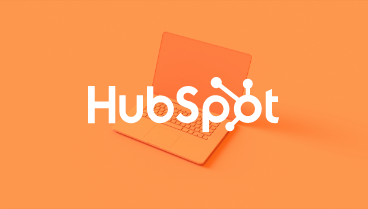
February 11, 2019
Marketing automation platforms such as HubSpot, and customer relationship management systems (CRM) are critical components of a company’s technology stack. No longer a luxury – they are a necessity.
Because HubSpot and CRM (sales platform) are used daily for most companies, integrating the two can significantly benefit your team. Below are five ways sophisticated marketers are utilizing their HubSpot integration.
Also read: 6 Questions to Consider before Beginning Your CRM and HubSpot Integration
When you integrate HubSpot with your CRM it improves lead quality by defining which leads are most valuable. In HubSpot, you can see when a contact visits a webpage, opens an email, fills out a form, or clicks a link. Your marketing team can follow their activity, evaluate it, and grade it through a process called lead scoring. Then, marketing can set up a process to automatically divide leads into bottom, middle, and top of the funnel.
Your marketing qualified leads (MQLs) are also instantly created in your CRM. Your sales team can then see a lead’s activity, as all the information from their HubSpot contact profile passes into your CRM.
A HubSpot integration can help determine which marketing activities drive results. Integrating HubSpot and CRM lets teams track the entire journey a contact takes from the moment they first visit your website. HubSpot allows businesses to audit even the most finite details.
For example, your team has visibility into what worked well and what didn’t have the most impact. You can create reports based on campaigns and view the overall revenue generated.
With CRM being integrated with HubSpot, you can report on campaign leads becoming opportunities, which hopefully then became customers.
Also read: How to Prepare for a HubSpot CRM Integration Launch
The data sales and marketing teams gather on their customers is invaluable. The more information they have, the more they can send targeted campaigns, and the easier it is for sales to continue nurturing customers. Nurtured leads make purchases 47% more often than non-nurtured leads.
HubSpot’s tools gather a variety of information to help you be more strategic in your nurturing efforts. Examples of information collected include:
No one likes when a lead goes cold. Syncing CRM data back to HubSpot allows the marketing team to identify when a record has been disqualified, marked inactive, or even when a record is associated with a lost opportunity. You can then use HubSpot’s tools to re-engage with these records, and once again, warm up the contacts to re-qualify them for sales.
With a HubSpot and CRM integration, you can create better campaigns for your leads and opportunities. With the data collected through both systems, campaigns can be personalized for each contact. For example, an email can come from a specific sales executive and include your contact’s name.
You can automate your workflows, like responding to inbound forms, so your team reaches more leads. Better campaigns mean your leads receive the right information at the right time, accelerating the sales cycle.
These are just a few examples of how integrating CRM and HubSpot can impact your company. If you need more information on HubSpot’s offerings or how to go about beginning the process, schedule a consultation with Lynton today.